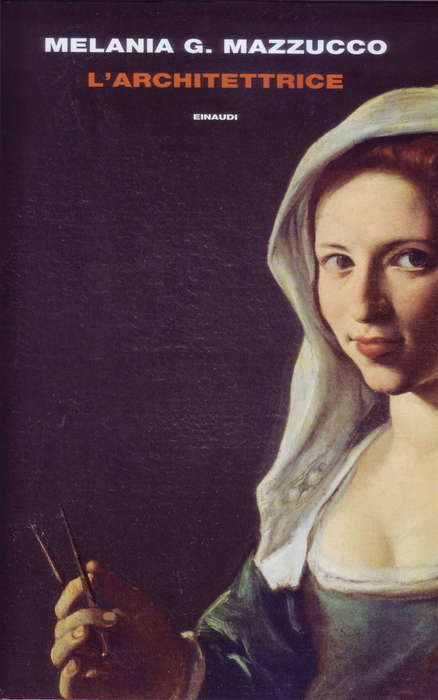Thanks to the testimony of the author of the writing, we know that "somewhere between the foundations of Villa Benedetta there is still the lead sheet which bears the name of the person who designed it, designed it and built it": Plautilla Bricci, architect of the villa called del Vascello on the Gianicolo in 1663. Of her, nothing was known about her for centuries. A woman, then, could not have relevance, let alone fame and recognition, so it would be very difficult to find citations concerning her (despite having paintings exhibited at the Vatican Museums), at least until a monograph of only two years ago, signed by Consuelo Lollobrigida ( Gangemi, pp. 190 - euro 20.40), when Melania Mazzucco had worked there for over ten years, from the time when she was intrigued by some news on this woman while doing research for her books on Tintoretto, starting with the novel '' The angel's long wait '', and, with regard to the daughter of this Marietta, on the female artists of the past.
After some very beautiful novels born from the chronicle of our days, here in 2003 the writer Strega Prize with '' Vita '' returned to a historical narrative of surprising richness and density, all poised between essay and novel, between history and invention, which is relevant, given the lack of data and documents, and made alive by the intention of restoring a soul, of feelings, a character to Plautilla, who grew up in the popular and papal seventeenth-century Rome of Borgo, which in these pages takes up charmingly life. A Rome in which the division into classes has great importance, in which the ecclesiastical power feels strong and can become violent: see the story made to the young Giovan Francesco Romanelli by Giovanni Briccio, father of Plautilla. As a frail and sickly girl she believes herself unloved and will instead be the favorite, the one educated to be different, writing for her the study books that one cannot afford to buy, to be aware of oneself, to develop her gift of artist, painter. This man, in fact, the son of a mattress, is also an eclectic artist and an intellectual, a painter devoted to the Cavalier d'Arpino to the point of becoming old-fashioned and forgotten when tastes change, but also actor and author of great theatrical texts popularity but few make it.
In the life of Plautilla, the brother Basilio who is often next to her, the beautiful sister Albinia, and then a Carmelite nun painter, Eufrasia Benedetti, who will be the medium with her own brother, the Abbot Elpidio, who will become man of her life, count. in every sense while still getting lost and finding yourself. He ends up among other important figures in Paris in the entourage of Cardinal Mazzarino and then sent to Rome of Louis XIV, where he will give his beloved prestigious offices and of which we can learn something: a building to be restored for Elpidio himself, then the chapel in San Luigi de 'Francesi which houses the three Caravaggios, and finally the great baroque villa of the vessel at San Pancrazio, which looks like a ship and which will be destroyed by the French cannonades during the extreme defense of the Roman Republic in 1849 which, almost two centuries later, it's the end of the novel.
A novel, therefore, very rich in stories, inventions, reconstructions, the result of lengthy research (of which a final note gives news), which manages to introduce us, between miseries and greatness, in the social, historical and cultural life of Rome in those years , but also in the very rich artistic one and introduces us, through the great authors to the painting of the time with his changing styles, citing rare documents and literary passages, but above all involves us thanks to the vivid figure of the protagonist, who thanks to the strength of the Literature finds that truth of facts and of having been lost, giving Plautilla its place and value again, through which Melania Mazzucco redeems all women artists who have been deliberately forgotten, even if today they have begun to go and withdraw them out of the darkness in which they are buried. It is no coincidence that perhaps even the Gentileschi, the '' Artemisia '' with which Anna Banti in 1947 was the forerunner of many literary reinvents and revaluations, is also mentioned in passing. (HANDLE).
Melania Mazzucco tells the architect
2019-12-11T15:20:19.657Z

MELANIA MAZZUCCO, '' THE ARCHITECTURE '' (EINAUDI, pp. 560 - 22.00 euros). Thanks to the testimony of the author of the writing, we know that "somewhere between the foundations of Villa Benedetta there is still the lead sheet which bears the name of the person who designed it, designed it and built it": Plautilla Bricci, architect of the villa called del Vascello on the Gianicolo in 1663. Of her, for centuries, nothing was known (ANSA)







